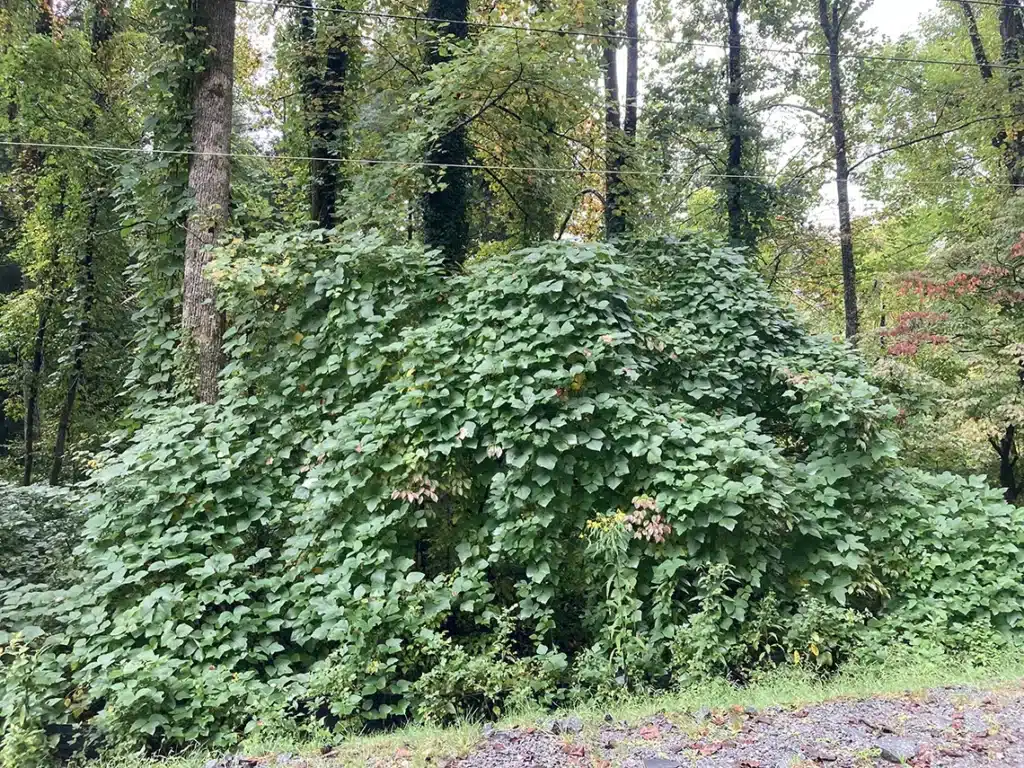About Kudzu
Unaffectionately known as “mile-a-minute” or “the vine that ate the South,” kudzu (Pueraria montana) is native to Japan and southeast China and was first introduced to the United States in the late 1800s. It was promoted as a solution for erosion control in the early-to-mid 1900s and has continued to spread throughout the southeast and beyond ever since then.
This destructive vine and other non-native invasive plant species have made their way into Pisgah. Some of these infestations have grown over generations, and the result is more and more acres of monoculture that threaten biodiversity.
About this Project
There are several patches of severe kudzu infestations along the Davidson River and Looking Glass Creek. If these infestations are left unchecked, kudzu will continue moving deeper into the forest and becoming more established, causing future treatment attempts to be less effective.
Our Invasive Plant Management Crew launched this project in September 2024, working alongside American Conservation Experience crew members to begin chipping away at the problem while training them in non-native invasive plant treatment procedures.
While the primary target in this area is kudzu, the project also involves the treatment of other non-native invasive plant infestations such as multiflora rose (Rosa multiflora) and privet (several species).
The project continued in early 2025 during a one-week period of working alongside technicians from EcoForesters in which a 13-acre area was treated. This process was expected to take a full two weeks, and the crews’ quick pace allowed them to pivot in week two and treat an additional 11-acre area along Avery Creek Road with a severe autumn olive infestation.
Next Steps
Our Invasive Plant Management Crew will repeatedly return to the treated area to perform follow-up treatments that will prevent these harmful invasive plants from forming new growth without impacting the area’s native plants.



